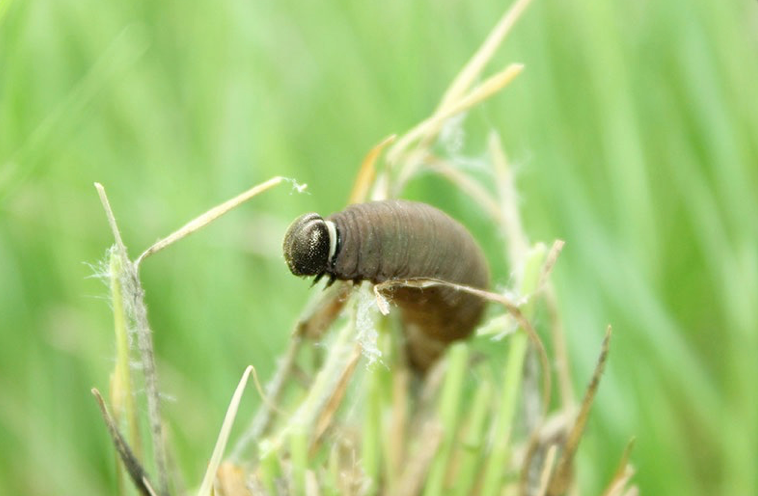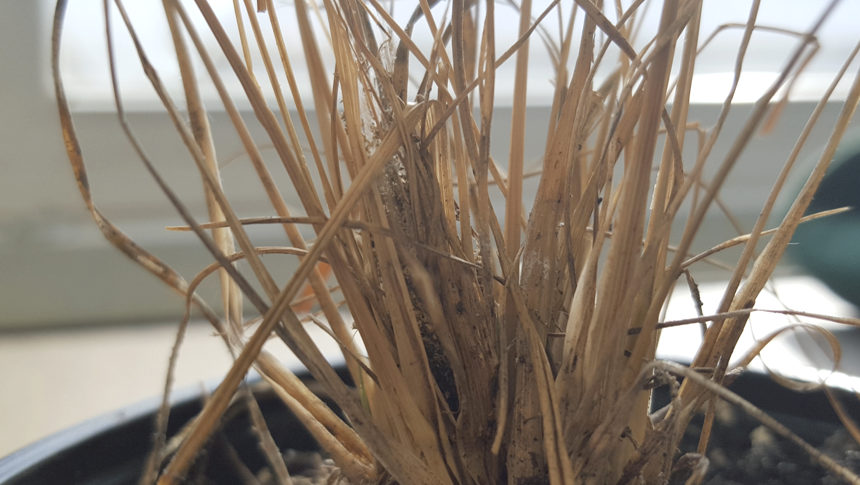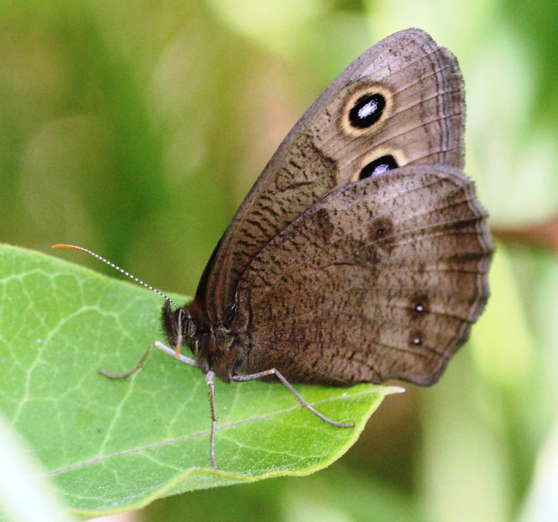2.2: Lepidoptera Relationships
- Page ID
- 91472
Grasses are important components in prairie ecosystems. Estimates on the components of the original North American prairie indicate that grasses composed up to 80% of the plants. Numerous species of grassland birds, mammals, and insects use grasses for nesting, cover, and food. As the prairie has declined across the Midwest, so have numerous native prairie species.

Native grasses are especially important to certain plant-eating insects. In general, insect herbivores specialize in eating a specific species, genus, or family. These insects are called specialists, as compared to generalists, which can eat a wider variety of plants. A common example of this is the monarch butterfly, whose larvae feed only on plants in the milkweed genus. If there is a dearth of milkweed plants, the larvae do not start eating different species. Instead, they are simply left without food. Monarchs need milkweed species in order to survive and sustain their populations. This is the case with most other Lepidoptera (butterfly and moth) species, although there are exceptions. Groups of insects that have been comprehensively studied suggest that less than 10% of larvae feed on species from more than three families (Bernays and Graham 1988).

Numerous species of Lepidoptera larvae have been noted in the literature to use native graminoids for food and shelter. In Minnesota alone, 36 species of Lepidoptera were recorded to feed on 17 dominant or common prairie grasses during their larval stage (Narem and Meyer 2017). When the range is expanded to include more states and more species of grasses, the number grows. Even more species, especially moths, are suspected of eating grasses, but as of yet do not have documented larval eating habits. As more research is done and more larval habits are documented, more species will be added to the list. Specific associations between native Lepidoptera of the northern Midwest and native grasses are listed in Chapter 3.

Butterflies that feed on native grasses occur in two subfamilies: the Hesperiinae or grass skippers and the Satryinae or browns, stayrs, or nymphs.
Grass skippers have short, thick bodies that grant them the ability to fly in bursts, making it look like they are skipping across the prairie. Larvae feed on grasses, sedges, and/or rushes. Many make and reside in shelters within or at the base of grasses during their larval life stage. They overwinter as larvae within the bases of bunch grasses at or just below the soil surface.

The Satyrinae subfamily contains browns, satyrs, and nymphs. All species eat monocots during their larval stage; some eat grasses and/or sedges. The larvae pupate underground in silklined nests or hang upside down. They hibernate as larvae (Scott 1986).
Many of the Lepidoptera that feed on grasses are endangered, threatened, or rare, like the Dakota skipper and Poweshiek skipperling. Often, these species depend on only a few species of grass to provide them with cover and/or food during their larval life stage. We should not be surprised that as the native grasses of the prairie disappear, the butterflies and birds dependent on this habitat have disappeared.


